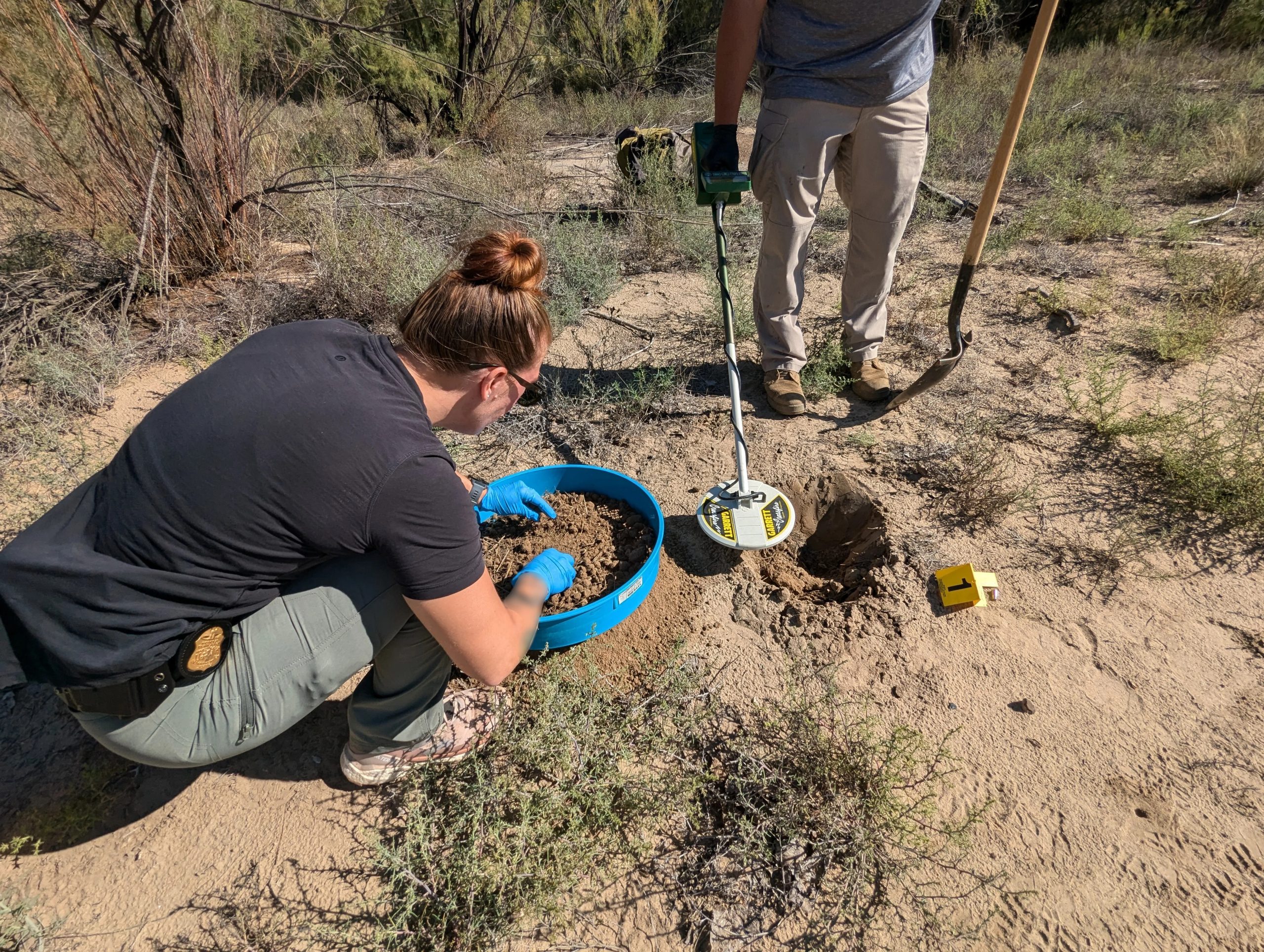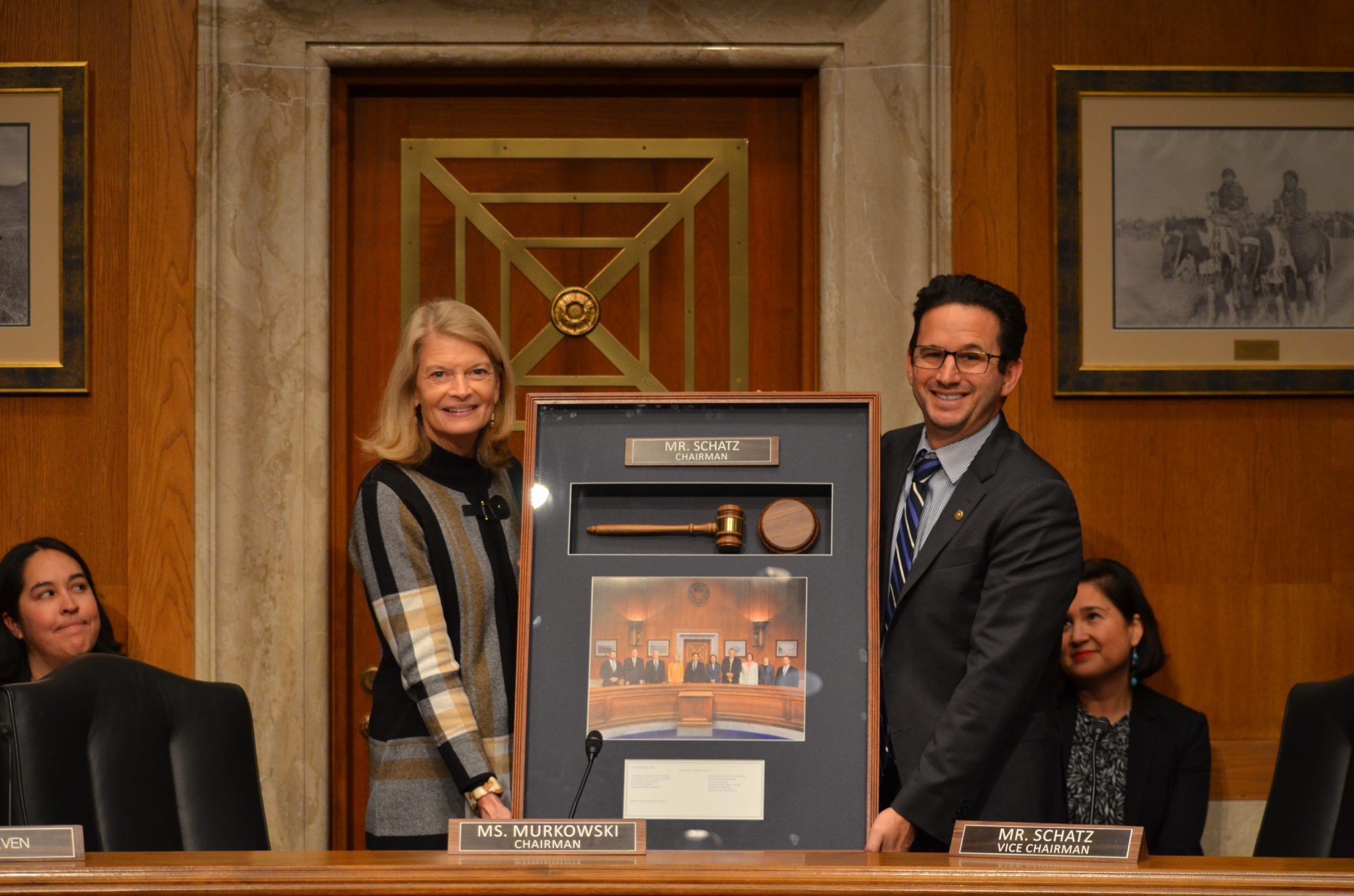Podcast: Play in new window | Download | Embed
(Photo: Antonia Gonzales)
U.S. Department of Health and Human Services (HHS) Secretary Robert F. Kennedy Jr. says he is doing everything he can to make sure there are no cuts to the Indian Health Service (IHS).
Sec. Kennedy made the brief comment Wednesday, as he was being ushered to his vehicle after a visit to a charter school in Gallup, N.M.
National Native News asked Kennedy about elevating the IHS, a pledge he made during his confirmation hearing.
“I’m doing everything that I can to make sure there are no cuts to the Indian Health Service.”

(Photo: Antonia Gonzales)
The IHS is an agency in the HHS. IHS provides service to about 2.8 million American Indians and Alaska Natives in 37 states.
Kennedy’s visit comes as leaders of tribes and Native organizations across the country are calling on the Trump administration to uphold treaty and trust responsibilities.
Among things leaders are concerned about are funding and workforce reductions. And they’re urging for tribal consultation.
Kennedy’s visit drew a group of demonstrators who were both President Donald Trump supporters and those protesting Trump administration actions.
Demonstrators included Navajo Nation citizens.
Kenneth Brown says he voted for Trump and was in support of Kennedy’s visit.
“He’s here to help, even for the school, the kids, the kids are people too.”

Kenneth Brown. (Photo: Antonia Gonzales)
Brenda Hoskie, who’s the Democratic Party Chair for McKinley County in New Mexico, was there in opposition of the visit.
“I’m here in protest. You know, make sure that the trust responsibility that we have with the United States government, that’s what they need to do. It’s plain and simple – not to take things away from Indian Country.”

Brenda Hoskie, right. (Photo: Antonia Gonzales)
Kennedy’s visit was part of a Southwest tour.
Before traveling to the town of Gallup, he met with Navajo Nation officials in Window Rock, Ariz.
He also met with other tribal leaders in Arizona this week.
Stay tuned to National Native News to hear what Kennedy had to say to school children – and what educators at the school say they’re doing to address healthy eating and fitness among young people.

(Photo: Murray Foubister / Flickr)
Members of the Blackfeet Nation filed a lawsuit against the federal government over recent tariffs imposed on Canadian products.
They claim the move impedes tribal sovereignty.
Montana Public Radio’s Victoria Traxler reports.
State Sen. Susan Webber (D-MT) and Blackfeet Tribal Member Jonathan St. Goddard filed the suit Friday over tariffs they say impacts trade between Canada and the Tribe.
Former congressional candidate and Missoula-based attorney Monica Tranel is carrying the case.
“Congress has constitutional authority to do tariffs. The executive does not have the authority to impose tariff in this way, either under the Constitution or under the statutes that were invoked. And it’s unconstitutional, illegal, and it needs to stop.”
The Blackfoot Confederacy’s historical territory overlaps the U.S. and Canadian border.
The lawsuit says tribal members are legally exempt from tariffs.
Plaintiffs say they damage the Blackfeet Nation’s cross-border trade and commerce.
Tranel is asking the court to freeze Canadian tariffs or find other ways to protect tribal members specifically.
 Gov. Michelle Lujan Grisham (D-NM) has signed legislation creating an emergency response to address missing Native Americans in the state – the Turquoise Alert System.
Gov. Michelle Lujan Grisham (D-NM) has signed legislation creating an emergency response to address missing Native Americans in the state – the Turquoise Alert System.
The New Mexico Indian Affairs Department said in a statement the alert system marks a significant step forward in addressing the issue of missing and murdered Indigenous people.
According to the New Mexico Department of Justice, there are nearly 200 missing Native Americans across the state.
Provisions include, establishing a Department of Public Safety–coordinated alert system for missing Indigenous persons; triggers alerts when disappearances involve suspicious, dangerous, or involuntary circumstances; and requires coordination with media, law enforcement, and state agencies for rapid dissemination and notification.
New Mexico is the fourth state to establish such an alert system for missing Native people.
 Vision Maker Media has launched a new YouTube channel for kids, introducing viewers to Native history, language, and ways of life with host Frankie, an animated hawk.
Vision Maker Media has launched a new YouTube channel for kids, introducing viewers to Native history, language, and ways of life with host Frankie, an animated hawk.
Each month will feature a new social studies theme containing a series of short videos curated from the organization’s film archives of 50 years.
April’s theme is “Rising Together”.
Get National Native News delivered to your inbox daily. Sign up for our daily newsletter today.







 A former tribal assistant chief is sharing his Native culture, and food through his business.
A former tribal assistant chief is sharing his Native culture, and food through his business.

 U.S. Sens. Lisa Murkowski (R-AK), chair of the Senate Committee on Indian Affairs, and Brian Schatz (D-HI), committee vice chair, are leading a hearing Wednesday on Indian education.
U.S. Sens. Lisa Murkowski (R-AK), chair of the Senate Committee on Indian Affairs, and Brian Schatz (D-HI), committee vice chair, are leading a hearing Wednesday on Indian education.


 In Oregon, the search for a missing Grande Ronde tribal elder continued over the weekend.
In Oregon, the search for a missing Grande Ronde tribal elder continued over the weekend.

